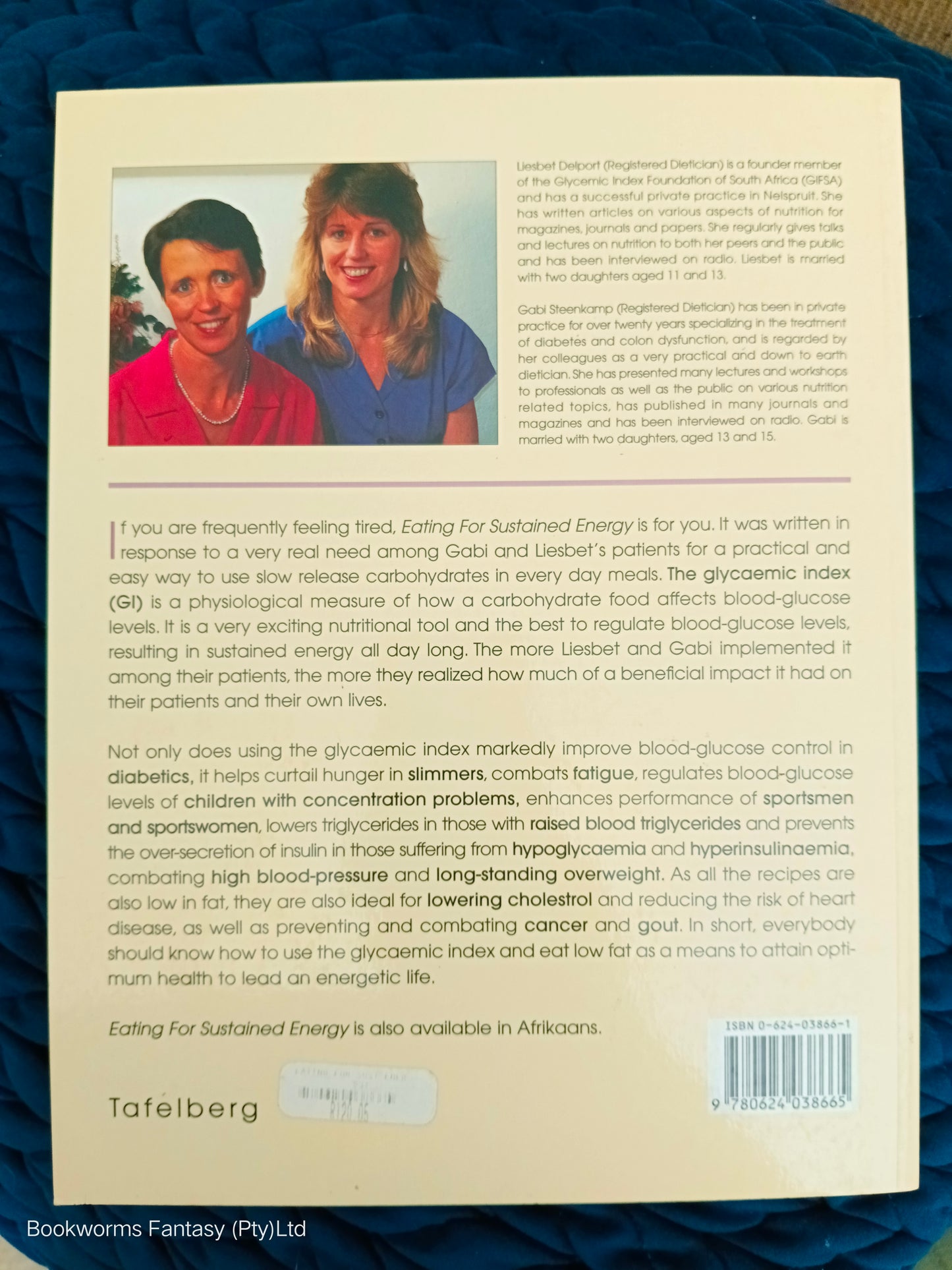1
/
of
2
Eating for Sustained Energy by Gabi Steenkamp and Liesbet Delport
Eating for Sustained Energy by Gabi Steenkamp and Liesbet Delport
Regular price
R 75.00
Regular price
R 120.00
Sale price
R 75.00
Unit price
/
per
Couldn't load pickup availability
126 Pages, Paperback
280 x 217 x 10mm (L x W x T)
Eating for Sustained Energy
Condition: LIKE NEW: This book is almost as new, with no damage nor defects. There no markings, inscriptions or signatures of any kind, pages are clean and vibrant.
Genres: Recipe / Cooking / Healthy Living
"Eating For Sustained Energy" by Liesbet Delport addresses the growing recognition of the physiological and lifestyle benefits associated with adherence to a low-Glycemic Index (GI) dietary regimen. This publication provides a comprehensive analysis of the low-GI diet, moving beyond superficial understanding to explore its practical applications and long-term implications for health and well-being.
The book acknowledges the increasing prevalence of individuals seeking dietary strategies to optimize energy levels and enhance overall vitality. It posits that the low-GI diet, characterized by its emphasis on foods that produce a gradual and sustained release of glucose into the bloodstream, offers a scientifically grounded approach to achieving these objectives.
Delport's work extends beyond a mere description of the low-GI concept. It delves into the underlying physiological mechanisms, elucidating the relationship between dietary choices, blood glucose regulation, and energy homeostasis. The publication provides practical guidance on food selection, meal planning, and lifestyle modifications to facilitate the successful implementation of a low-GI dietary approach.
Furthermore, "Eating For Sustained Energy" addresses the broader implications of a low-GI diet, including its potential role in weight management, metabolic health, and chronic disease prevention. It offers a nuanced perspective on the long-term sustainability of this dietary pattern, considering factors such as individual dietary preferences, cultural influences, and socioeconomic considerations.
Share




